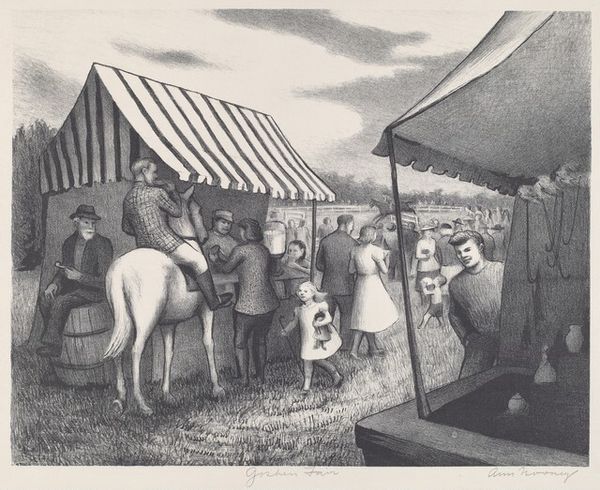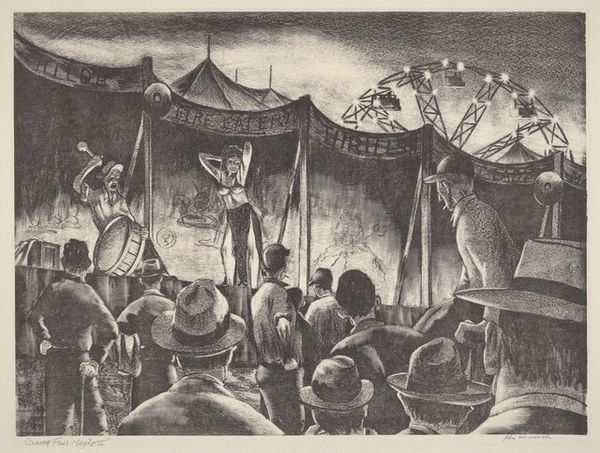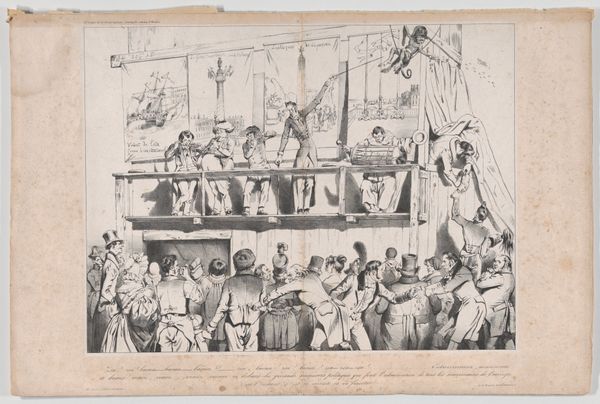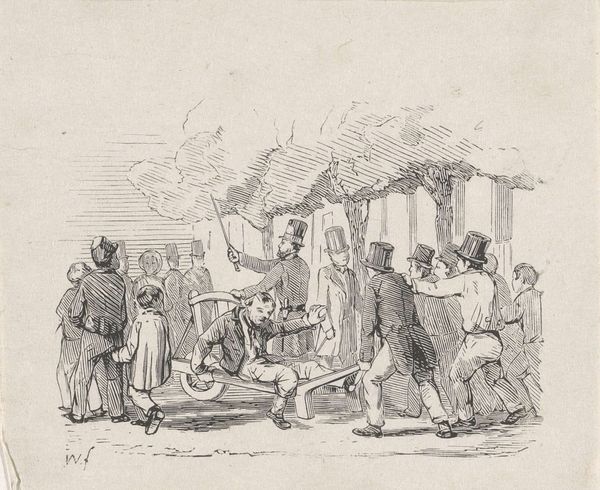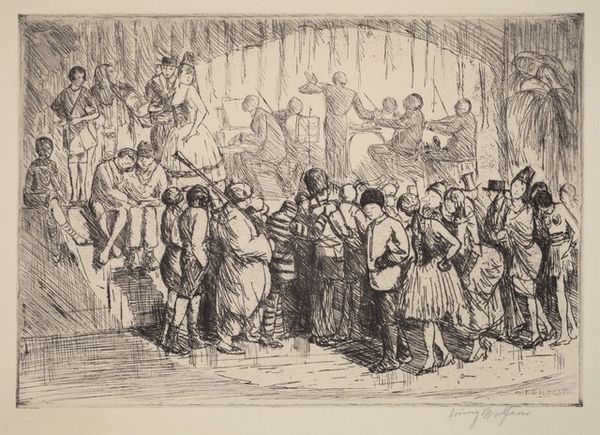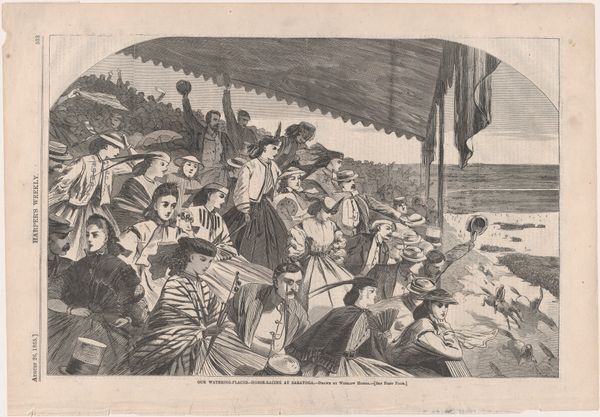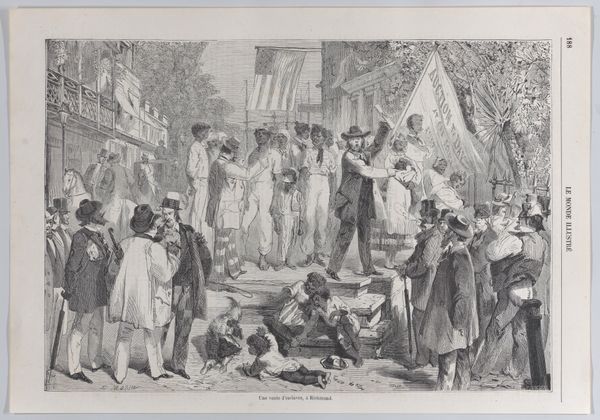
drawing, print, ink
#
drawing
#
ink drawing
#
narrative-art
# print
#
ink
#
pen-ink sketch
#
genre-painting
#
modernism
#
realism
Dimensions: image: 195 x 275 mm sheet: 252 x 313 mm
Copyright: National Gallery of Art: CC0 1.0
Editor: This is "One Thin Dime" by Basil Hawkins, created in 1938, and rendered in ink. The subject matter seems to be an outdoor performance, maybe at a fair. It reminds me of images from the Depression Era. What strikes me is how detailed the rendering is for a print; you can almost feel the texture of the ink on the page. How do you interpret this work? Curator: Focusing on the material, let’s consider how the medium of ink impacts our understanding. This print wasn’t just a spontaneous act; it’s a deliberate *reproduction*. It speaks to distribution and access. Ink lends itself to this kind of mass dissemination. Given the date, how does this availability inform its potential social commentary? Editor: Hmm, so if it’s a print, then it can be circulated more easily. During the Depression, that might mean more people could access art depicting their lives and struggles, perhaps sparking dialogue? Curator: Exactly! Think about the labor involved: the initial creation, the carving of the plate, and then the repetitive process of printing. How does this connect to the labor depicted within the scene itself? The performer, the person collecting money – they are also ‘producing’ something. How are we, as consumers of this print, implicated in that network of production? Editor: That’s a really interesting way to look at it. I hadn't considered the physical *making* as part of the artwork’s message. The act of producing multiple prints almost mirrors the repetitive labor that was so common at the time. I will try and apply that idea to other artworks. Curator: Thinking about art in terms of its production and accessibility provides a crucial lens for understanding its role in society. It makes us conscious of how it circulates.
Comments
No comments
Be the first to comment and join the conversation on the ultimate creative platform.
